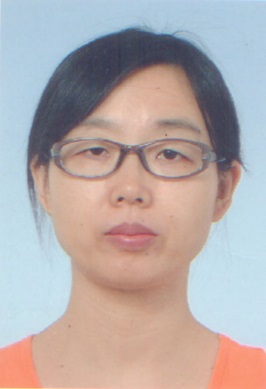Zhou Houbo, Hu Fengxia*, Jing Wang, Shen Baogen
Institute of Physics, Chinese Academy of Sciences, Beijing, 100190
Abstract: Magnetic refrigeration technology based on magnetocaloric effect has attracted ever-increasing interest for its environmental-friendly and energy-saving superiority compared to conventional vapor compression refrigeration. With the advent of the first prototype of room temperature magnetic refrigeration using Gd as refrigerant in 1976, the exploration of magnetocaloric materials in specific refrigeration temperature regions is in full swing. In the early year of 2011, United States proposed the Materials Genome Initiative, which aims at shortening the exploration cycle and reduce costs, then speeding up the exploring process of materials. Machine learning method, based on statistical theory, is the most effective data analysis method at present. Compared with the trial-and-error method relying on intuition and repeated experiments, it has higher efficiency in finding new materials with specific performance. Machine learning method is used to find rules in material data, establish the mapping relationship between characteristic parameters and target characteristics, and then guide experiments.
In this work, La(Fe,Si)13-based compounds are taken as example to study magnetocaloric effect involving magnetic-structure coupling by machine learning. In particular, the ratio of ferromagnetic Curie temperature/magnetostructural transition temperature (TC) to paramagnetic Curie temperature (T0) is introduced to characterize the magnetic-structure coupling in the data acquisition process. The strong magnetovolume effect associated with the first-order phase transition is the main source of the giant magnetocaloric effect in La(Fe,Si)13-based compounds, but the data of , the volume change accompanying with the magnetic phase transition is very limited in literatures. For the La(Fe,Si)13-based materials with second-order phase transition, TC < T0, while TC > T0 for first-order phase transition. It is easy to understand that the ratio TC/T0 can effectively characterize the magnetic-structure coupling and the evolution of phase transition properties. Through machine learning, the correlation model of the predicted target (magnetic entropy change) and TC/T0 is established, and the prediction effect of the model is analyzed.
Through machine learning, it is found that the feature parameter TC/T0 has a high correlation with the magnitude of isothermal magnetic entropy of the magnetocaloric materials. According to the calculation of Pearson correlation coefficient and subsequent fitting verification, the linear relationship between entropy change and –(T0/Tc)2 is obtained, which indicates that a larger ∆S means a larger Tc/T0 for any La(Fe,Si)13-based compound. The machine learning based on a large amount of data and the calculation of Pearson coefficients provide a reliable basis for the subsequent fitting of small amounts of data.
Keywords: Machine learning; Magnetic-structure coupling; Tc/T0
Email:zhouhoubo@iphy.ac.cn
机器学习研究磁-结构耦合特征依赖的磁热效应
周厚博,胡凤霞*,王晶,沈保根
中国科学院物理研究所,北京,100190
摘要:磁热效应发现至今,磁制冷技术逐渐成为取代传统气体压缩制冷的新型节能、环保制冷技术,随着第一台以Gd为制冷工质的室温磁制冷样机问世(1976年),围绕特定制冷温区磁热效应材料的探索如火如荼。早在2011年,美国提出了材料基因组计划(Materials Genome Initiative),希望通过此研究计划来缩短研发周期,降低研发成本,从而加快材料的研发进程。关键的一点是建立材料成分、工艺等与微结构性能之间的联系。机器学习方法基于统计学理论,是目前最为有效的一种数据分析手段,相比于依靠直觉和反复试验的试错法,在寻求特定性能的新材料方面具有更高的效率,使用机器学习方法在材料数据中寻找规律,建立特征参数与目标特性之间的映射关系,进而指导实验。
本项工作以La(Fe,Si)13基化合物为例,利用机器学习手段研究磁-结构耦合特征依赖的磁热效应。特别地,在数据采集过程中引入铁磁居里温度/磁共结构相变温度TC与顺磁居里温度T0的比值TC/T0来表征磁-结构耦合特征。一级相变La(Fe,Si)13基化合物所伴随的强磁体积效应是巨磁热效应的主要来源,但是关于磁相变伴随的体积变化V数据量十分有限。对于La(Fe,Si)13基二级相变体系,TC < T0;一级相变体系,TC >T0。容易理解TC与T0的比值TC/T0可有效表征磁-结构耦合特征、以及相变性质的演变过程。通过机器学习方法建立预测目标属性磁熵变与TC/T0相关模型,分析模型的预测效果。
通过机器学习发现,特征参数TC/T0对磁热材料的等温磁熵变大小具有高度的关联性。根据Pearson相关系数的计算以及后续的拟合验证,得到关于熵变与–(T0/Tc)2的线性关系,这说明对任意La(Fe,Si)13基化合物而言,具有较大的∆S的材料,意味着具有较大的Tc/T0。基于大量数据的机器学习和Pearson系数的计算为后续少量数据的拟合提供了可靠的研究基础。
关键词:材料基因;磁-结构耦合;Tc/T0

中国科学院物理研究所 研究员,2002年中国科学院物理研究所获博士学位, 2006 年作为“引进国外杰出人才计划”到中国科学院物理所磁学国家重点实验室工作。先后从事金属间化合物的结构、磁性、磁热效应的研究以及钙钛矿锰氧化物薄膜体系磁性和电输运性质的研究工作。自2000年至今,发表 SCI 论文180余篇,其中50余篇发表于J. Am. Chem. Soc.、Nano Energy、Adv. Mater.、Phys. Rev. Lett./ Phys. Rev. B、Appl. Phys. Lett.等重要期刊,SCI引用5000余次。第一作者单篇论文最高引用990 余次。
Email: fxhu@iphy.ac.cn